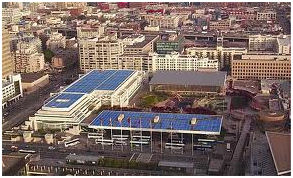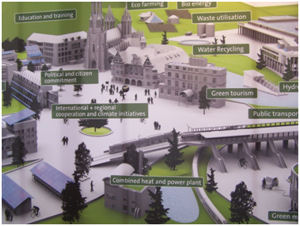

More than 18,000 people from 60 countries attended the conference in July, which included 900 exhibits in the massive Moscone Convention Center in downtown San Francisco. Attendees came to see the latest innovations in photovoltaic cells and modules, manufacturing, balance of system components, mounting and tracking systems, energy storage technologies, solar heating and cooling technologies, and many other products and services.
Just the size and scale of the event was overwhelming. So I set out to discover if I could, the direction and latest technologies driving the solar industry.
Probably the most momentous change in the solar energy industry would have to be the plummeting cost of individual photovoltaic cells. I talked with a long-time solar expert who remembers a time when photovoltaic cells cost $2,000 dollars each. I personally remember the price of $650 dollars per cell less than two years ago. The huge Chinese exhibit of cell manufacturers boasted photovoltaic cells for just $265.00 dollars each.
Industry leaders recognize this as a game-changer. In reality, photovoltaic (PV) has come within the reach of the average homeowner in North America. This is hugely significant because it may well shift priorities from massive industrial scale energy production to more rooftop and regional applications.

Innovative storage technologies have made it possible to save the electricity generated during the sunniest parts of the day for use after the sun goes down.
 Fascinating was the presentation by the Mayor of Freiburg Germany, a quaint town completely solar with absolutely no sign of energy transmission. No poles, no wires just clean air and beautiful views, a perfect example of shared regional energy generation.
Fascinating was the presentation by the Mayor of Freiburg Germany, a quaint town completely solar with absolutely no sign of energy transmission. No poles, no wires just clean air and beautiful views, a perfect example of shared regional energy generation.